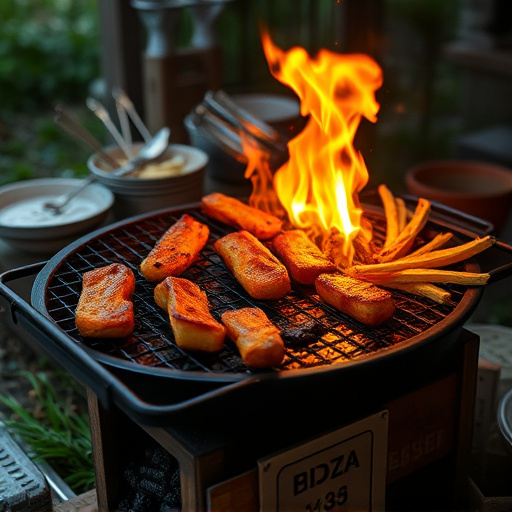To make high-quality BBQ jerky, start with lean cuts of sirloin or brisket, trim fat, and cut against the grain. Season with dry rubs or marinades for 12-48 hours, then bake at 175°F (74°C) for 2-3 hours. Store in an airtight container at room temp, refrig, or freeze to maintain crispness. Use a flavorful marinade of soy sauce, Worcestershire, garlic, onion powder, salt, and pepper. Let sit several hours, then dehydrate at 250°F (120°C) for chewy, tasty jerky.
Looking to craft the perfect BBQ jerky at home? This comprehensive guide will walk you through every step. Discover the ideal cut of beef, learn how to prepare and trim it, and create a mouthwatering seasoning mix using dry rubs or marinades. We’ll share techniques for maximum flavor infusion, a detailed drying and cooking process, and storage tips for extended shelf life. Master the art of BBQ jerky with this essential recipe!
- Choosing the Right Cut of Beef for Jerky
- Preparing the Beef: Trimming and Cutting
- Creating the Seasoning Mix: Dry Rubs and Marinades
- Techniques for Effective Seasoning Infusion
- Drying and Cooking the Beef: A Step-by-Step Guide
- Storage and Shelf Life of Homemade BBQ Jerky
- Tips and Tricks for Perfect BBQ Jerky Every Time
Choosing the Right Cut of Beef for Jerky
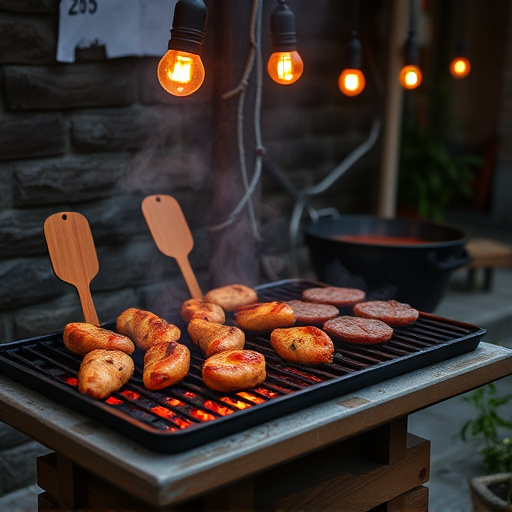
When crafting your perfect BBQ jerky, selecting the ideal cut of beef is a crucial first step. Look for lean cuts with minimal fat content, as higher fat can make the jerky more susceptible to spoilage and result in a less desirable texture. Popular choices include sirloin, round steak, or even brisket. These cuts provide a good balance between tenderness and staying power when dried.
Consider the marbling, or streaks of fat, within the meat. A bit of marbling can enhance flavor, but too much will render your jerky greasy. Opt for a cut with fine marbling for a tastier, healthier BBQ jerky recipe that satisfies your cravings without compromising quality.
Preparing the Beef: Trimming and Cutting
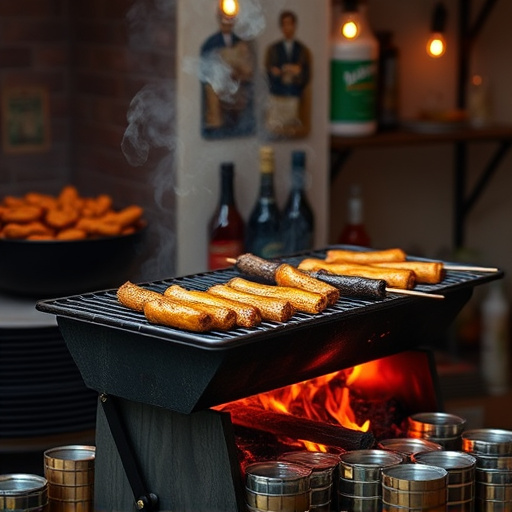
Preparing your beef for a delicious BBQ jerky recipe starts with selecting the right cut and trimming it properly. Look for lean, well-marbled cuts like sirloin or flank steak. These cuts will provide the perfect balance of flavor and texture when dried. Before cutting, trim away any visible fat or silver skin, leaving behind just the desirable muscle tissue.
Once trimmed, cut the beef against the grain into thin slices. Cutting against the grain ensures that each piece is leaner and easier to chew. This step is crucial in creating tender, satisfying jerky. Aim for uniform thickness throughout to ensure even cooking and seasoning absorption.
Creating the Seasoning Mix: Dry Rubs and Marinades
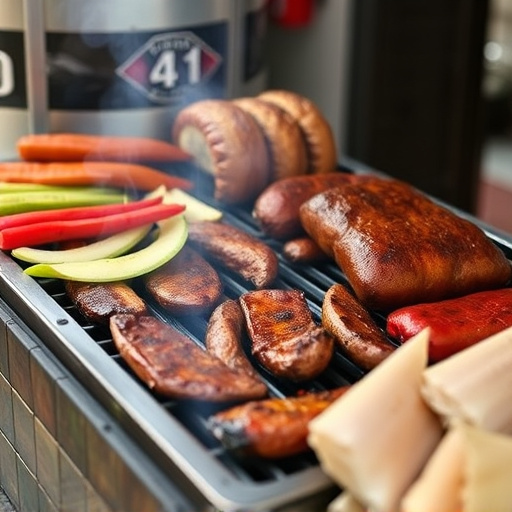
Creating the perfect seasoning mix is key to crafting a mouthwatering BBQ jerky recipe. There are two primary methods to achieve this: dry rubs and marinades. Dry rubs are a simple blend of spices, herbs, and salts that can be massaged into the meat before drying. This method allows for a robust, smoky flavor to penetrate directly into the beef. A popular combination includes salt, pepper, garlic powder, paprika, and a touch of brown sugar for balance.
Marinades, on the other hand, involve soaking the beef in a mixture of oils, acids (like vinegar or lemon juice), and various spices. This process tenderizes the meat while infusing it with an array of flavors. Experimenting with different marinades can yield unique results—try combining soy sauce, Worcestershire sauce, garlic, and ginger for an Asian-inspired twist on your BBQ jerky recipe.
Techniques for Effective Seasoning Infusion
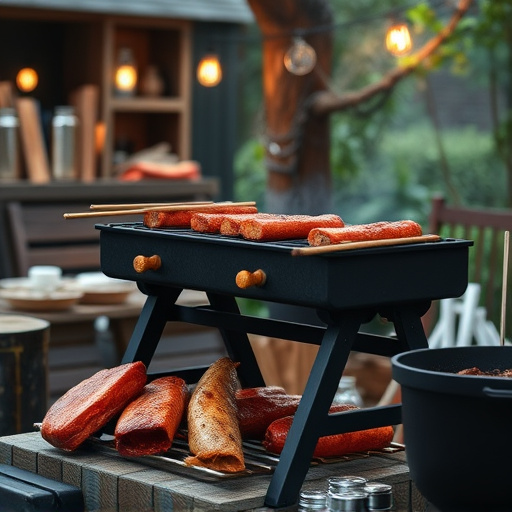
For optimal results in your BBQ jerky recipe, effective seasoning infusion techniques are key. One proven method is to marinate the beef for an extended period, allowing the flavors to penetrate deep into the meat fibers. This process can last anywhere from 12 to 48 hours, depending on the desired intensity of taste. The longer the marinade soaks, the more flavorful your jerky will be.
Another technique involves using a mixture of spices and herbs tailored for BBQ jerky. Common ingredients include salt, pepper, garlic powder, paprika, and onion powder. For an extra smoky flavor, add liquid smoke or use a wood chip smoker. Experiment with different ratios to create the perfect blend that suits your taste preferences.
Drying and Cooking the Beef: A Step-by-Step Guide
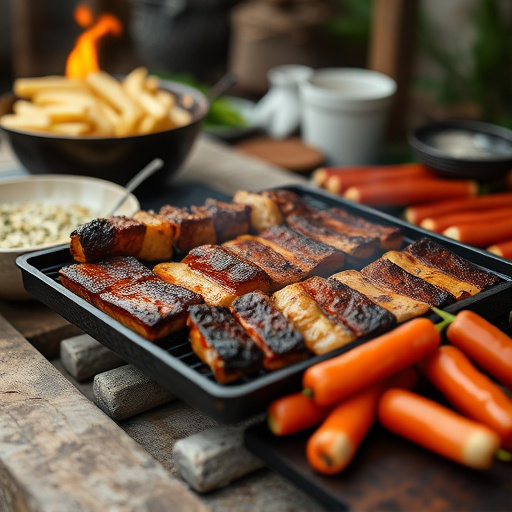
After seasoning your beef for BBQ jerky, the next crucial step is to dry and cook it. Begin by preheating your oven to 175°F (74°C). This temperature range is ideal for slow drying, preserving the meat’s flavor and texture. Place the seasoned beef slices on a lined baking sheet, ensuring they don’t overlap, as this could lead to uneven cooking. Bake for approximately 2-3 hours, or until the beef is significantly leaner and feels firm to the touch.
Once dried, you’ll notice the meat shrinks slightly, revealing its true jerky form. Remove the jerky from the oven and let it cool completely before moving on to the next step of cooking. This slow and deliberate process ensures your BBQ jerky recipe turns out crispy, flavorful, and ready for your next BBQ session.
Storage and Shelf Life of Homemade BBQ Jerky
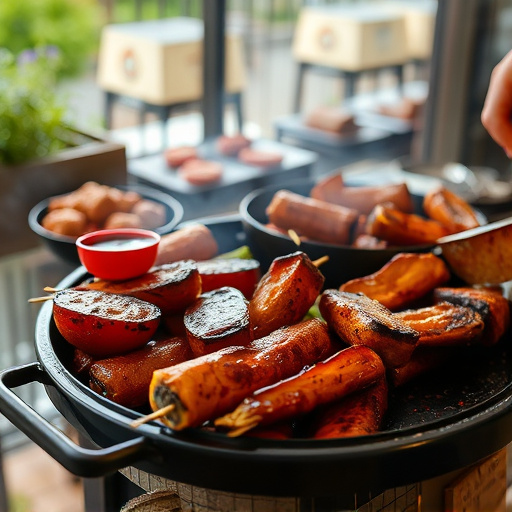
When it comes to storing your homemade BBQ jerky recipe, proper preservation is key to maintaining its quality and extending its shelf life. It’s best kept in an airtight container at room temperature, away from direct sunlight. This will help prevent moisture loss and keep the jerky crispy. You can also store it in the refrigerator for up to 2 weeks or freeze it for up to 3 months for extended freshness.
The shelf life of BBQ jerky largely depends on how it’s stored. When kept at optimal conditions, homemade jerky can last for several months. However, once opened, it’s best consumed within a week to maintain maximum flavor and texture. Always inspect the jerky for any signs of mold or off smells before consuming, and discard any uneaten portions promptly.
Tips and Tricks for Perfect BBQ Jerky Every Time
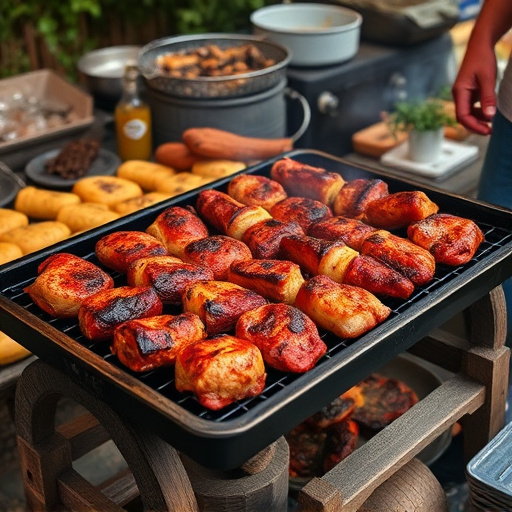
Creating the perfect BBQ jerky is an art, and with the right tips, anyone can become a master at it. The key to delicious, tender, and flavorful BBQ jerky lies in the seasoning. Start by marinating your beef slices in a mixture of soy sauce, Worcestershire sauce, garlic powder, onion powder, salt, pepper, and any other spices you prefer. Letting the meat sit in this marinade for several hours or even overnight will help penetrate the beef’s fibers, making it incredibly tender.
When it comes to cooking, consistency is crucial. Preheat your oven to a low temperature—around 250°F (120°C)—and use a dehydrator or a slow cooker to ensure even drying. This process takes time, but the result will be a satisfying, chewy jerky that’s packed with flavor. Don’t rush it; proper drying ensures your BBQ jerky recipe turns out perfectly every time.
